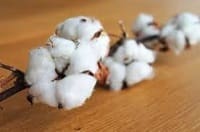Process Modification
a) Control and monitoring of chemical and water consumption in continuous processes.
b) Controlling machine cleaning with a timer for water consumption.
c) Efficient removal of print pastes from buckets, squeegees and screens before washing these items.
d) Applying softeners to fabric by spraying at the stenters, rather than at the jets.
e) Counter current washing/rinsing on continuous machines.
f) Control water addition to screen and squeegee washing by timers.
Equipment changes
a) Modify jiggers by making use of sprays and vacuum slots – enhances rinsing efficiency.
b) Replace high liquor ratio winches with jets.
c) Install heat exchanges for recovering heat from hot dyebath effluent.
d) Fit shut-off nozzles onto manually held hosepipes.
e) Install reversible pumps on printing lines to save unused print paste.
Chemical substitution and/or elimination
a) Eliminate use of heavy metal based dyes.
b) Replace mono-reactive dyes with bi-functional ones to increase exhaustion.
c) Eliminate use of detergents in “washing off” after reactive dyeing.
d) Eliminate neutralisation with acetic acid after alkaline reactive dyeing.
e) Avoid bleaching with sodium hypochlorite.
f) Use enzymes instead of persulphates in desizing.
g) Avoid use of optical brighteners.
h) Avoid Sulfapol as a detergent during wool scouring.
i) Avoid white spirits in print pastes.
j) Avoid using carriers in polyester dyeing.
k) Avoid “after chroming” for dyed polyamide or wool.
l) Avoid use of acetic acid to neutralise after reactive dyeing.
m) Use biodegradable knitting oiln) Do not use resins that release free formaldehyde.
Recycling and/or reuse
a) Recover indigo after denim dyeing by ultrafiltration.
b) Size recovery.
c) Recover and reuse salt after reactive dyeing by reverse osmosis.
d) Recover heat from stenter exhaust.
e) Recycle cooling water and condensate.
f) Reuse dirty water for washing printing buckets, to dampen ash from boilers and cleaning and flushing water.
Housekeeping
a) Collect all unused print pastes for bulking-up; do not allow dumping of print pastes to effluent drain.
b) Carry out leak tracing and repairs on water pipes and valves.
c) Check non-return valves for reverse leakage.

